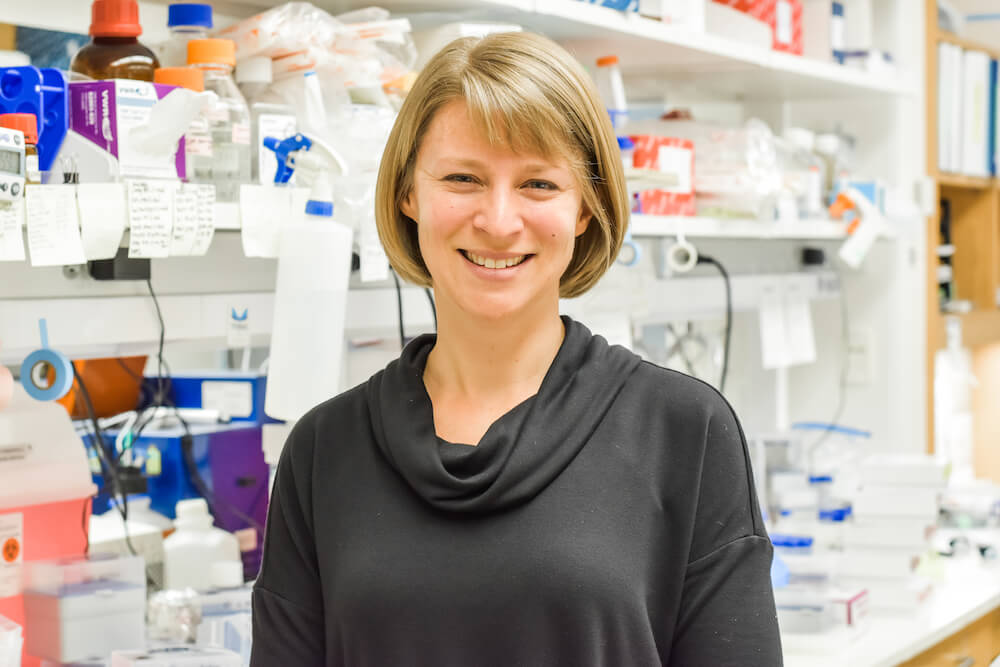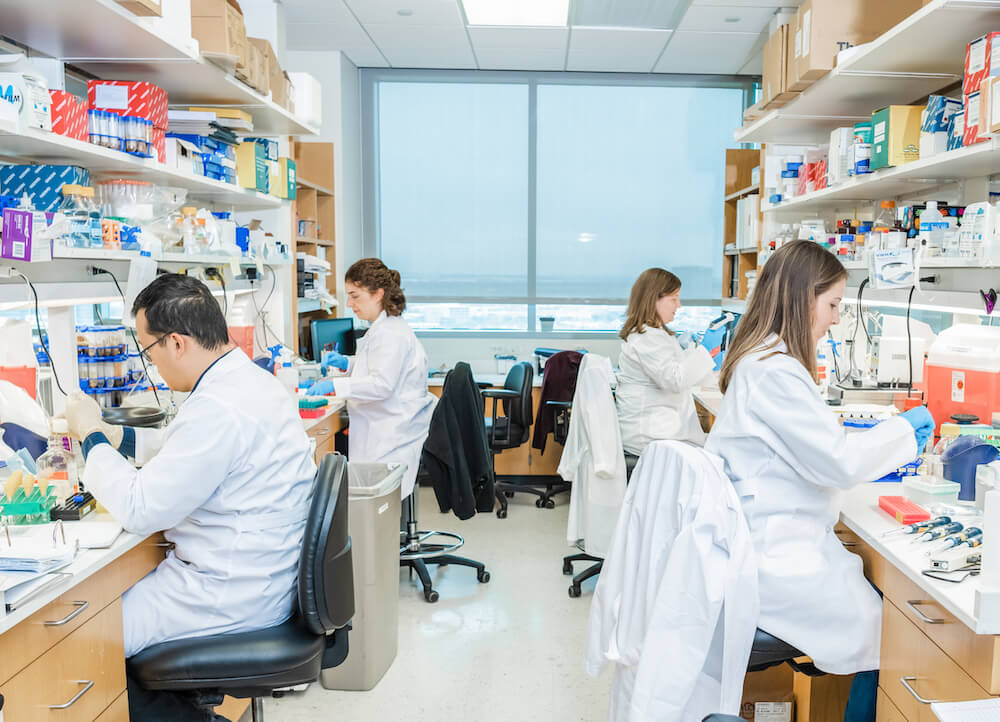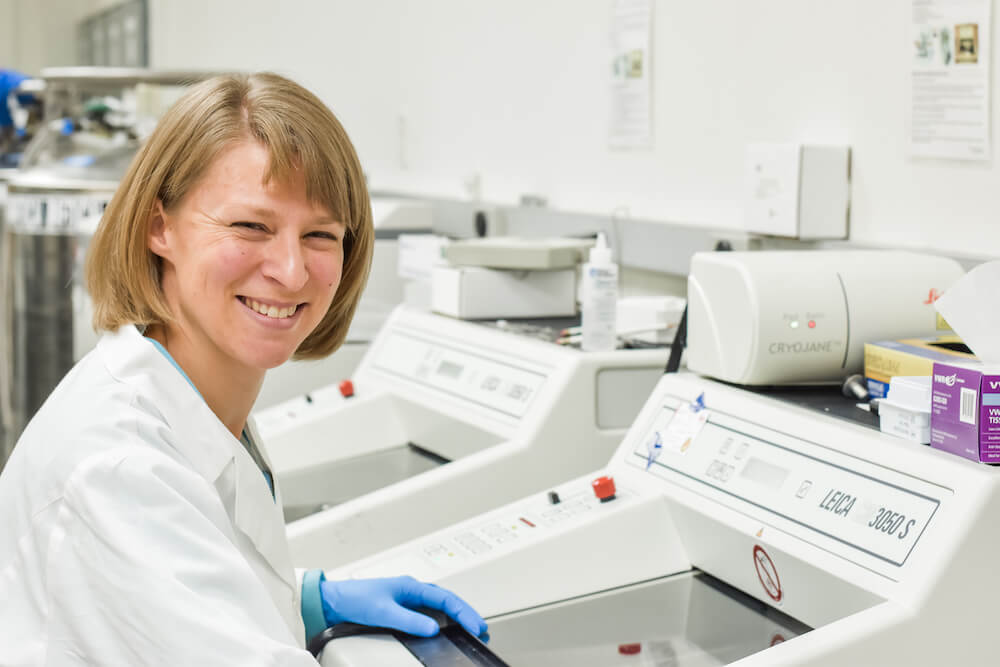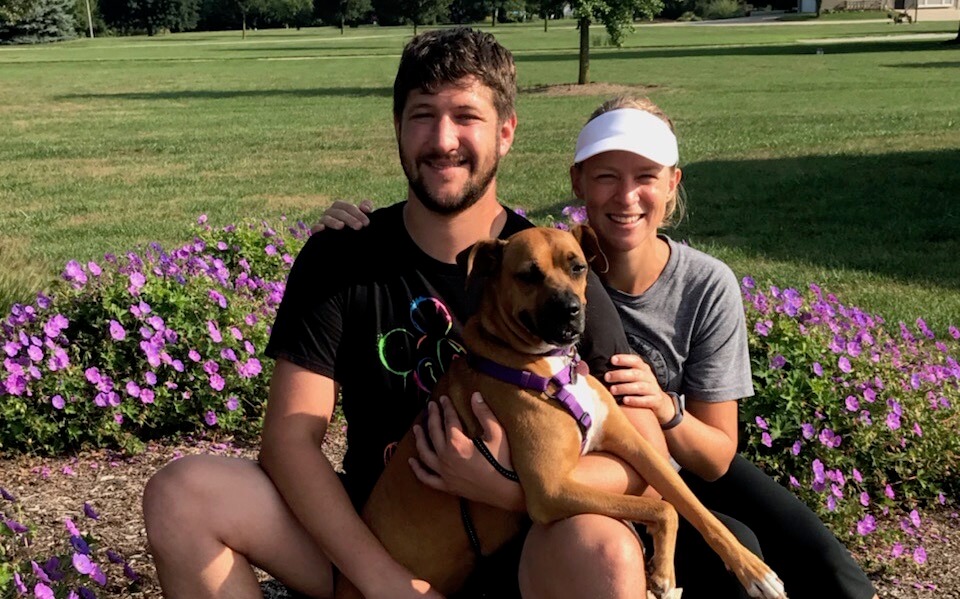April 22, 2020
Elise Jeffrey, Ph.D., is a Damon Runyon Foundation Fellow in the Morrison lab. In CRI, Elise is studying blood stem cells and their environment to find new therapies for patients whose bone marrow is damaged due to cancer treatments like chemotherapy or radiation therapy.
What are you researching?
I study blood stem cells, which live in specialized locations throughout the bone marrow. Many other cell types interact with blood stem cells to keep them alive, maintain their stem cell state, and activate them to make more blood cells when they are needed. However, these tiny interactions between cell types in the bone marrow have been difficult to visualize using conventional microscopes. To overcome this issue, I use cutting-edge tissue preparation and microscopy techniques to visualize these interactions at high resolution within the bone marrow tissue.
By performing similar studies on injured bone marrow, I hope to shed new light on the way that support cells restore the function of blood stem cells and repair the bone marrow. In particular, I’m excited about studying fat cells, which appear in the bone marrow after injury. The function of these cells in the bone marrow is unclear at the moment, but I hope that my high-resolution microscopy studies will help us gain a better understanding of the role of this unique cell type in bone marrow repair. Ultimately, I hope to identify new therapies to improve blood stem cell function and bone marrow repair which certain cancer treatments like chemotherapy or radiation therapy can damage.


What is the most valuable thing you’ve learned from people in your lab?
People in our lab come from all over the world. This is true for many labs around the country, but in CRI we have a particularly high percentage of postdoctoral fellows from countries other than the U.S. I have enjoyed learning about other cultures and customs from my international colleagues, but the one thing that stands out to me is that science is a universal language. No matter what our differences in other aspects of life, good science always speaks for itself.
When you were a kid what did you want to be?
I was a very creative kid, always doing some type of arts and crafts project. I enjoyed drawing, painting, jewelry making, and sculpture, among other things. At some point in high school, I figured out that I had a knack for science, and my career began to take a different path. However, as a scientist, I feel that I still use the creativity that I had as a kid all the time.
Creativity is a key part of problem solving, which we do every day in science. Sometimes we are trying to come up with a new way to pull off a technically challenging experiment, and other times we are trying to figure out how the data from many experiments fit together to understand a biological process. On a small or large scale, creativity is an important part of science.


What about being a researcher is different than people might expect?
Research is not typically full of eureka moments in which we make big discoveries on a daily basis. This can happen, but usually science is done at a more deliberate and methodical pace. An important part of research is being your toughest critic. When we do an experiment, it’s our job to think about all the ways that experiment can go wrong and create internal controls to make sure it doesn’t go wrong. We carefully repeat experiments until we are satisfied that our data are correct and that the results and conclusions can be trusted. Then, when we publish our findings and ultimately build upon them to create therapies for patients, we can be confident that the treatments have a good chance of helping patients.
What is your favorite stress-reduction technique?
I enjoy taking my dog Biscuit on a hike in one of the many parks in the Dallas area. Breathing the fresh air and watching my dog play in the grass is a great way for me to de-stress when I leave the lab.

© 2025 Children’s Research Institute Dallas Texas | Privacy | Site Policies